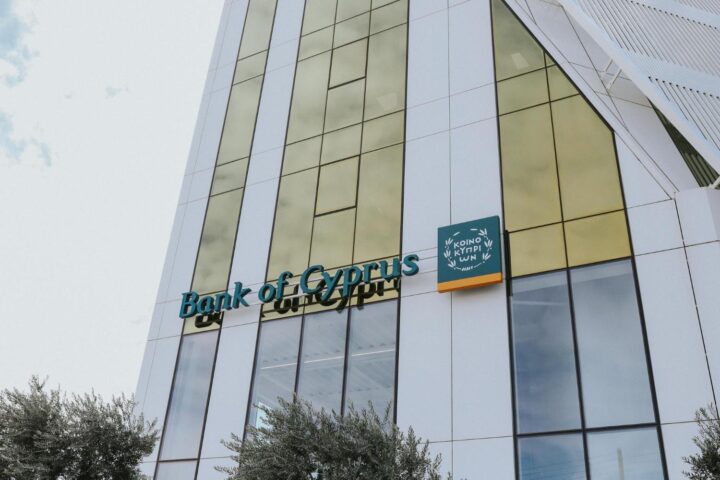The Cyprus economy will recover in the second half of 2021 and the economic and fiscal disruption caused by the pandemic will dissipate over the forecast horizon, according to Capital Intelligence Ratings.
Affirming the Cyprus long-term foreign currency rating (LT FCR) and short-term foreign currency rating (ST FCR) at ‘BB+’ and ‘B’, respectively, the rating agency said the outlook was affirmed as ‘stable’.
It said that the ratings and outlook are underpinned by the benefits Cyprus enjoys as a member of the eurozone, including access to crisis funding mechanisms and a supportive monetary policy.
“The ratings are also supported by generally sound macroeconomic management and proactive public debt management, with the government securing its financing needs through uninterrupted access to capital markets while building an emergency cash buffer to counter short-term shocks,” said CI Ratings.
It added that, “the adverse impact of Covid-19 on domestic demand was cushioned by the authorities’ targeted support measures, with the government final consumption increasing by 13.0%. In common with other eurozone member states, inflationary pressures were depressed [in 2020] while the average unemployment rate increased to 7.6% from 7.1% in 2019.”
The rating agency said that despite the ongoing second wave of the pandemic and its protracted adverse impact in the first half of 2021, the short- to medium-term outlook remains broadly favourable and that the Cypriot economy is expected to grow by 4% in 2021 and 3.3% in 2022.
This is underpinned by recovering private consumption, the continued rollout of vaccinations, and higher investment supported by access to financing from the Recovery and Resilience Facility (RRF). Net exports are expected to pick up slightly, based on the expected growth in information technology and business services.
CI Ratings said the outlook for trade and leisure related activities remain uncertain given that performance is not expected to return to pre-pandemic levels and hinges on the further easing of travel restrictions and the pace of vaccinations in tourism source markets.
Risks to the outlook remain pronounced due not only to pandemic-related uncertainties, but also to the possibility of weaker-than-expected private consumption after the expiry of the loan repayment moratorium in June 2021. In addition, the banking sector remains relatively weak and the eurozone may recover more slowly than currently envisaged.
ECB quantitative easing
The government has also benefitted from the European Central Bank’s (ECB) quantitative easing measures, including the Pandemic Emergency Purchase Programme (PEPP). According to the ECB, the accumulated net purchases of Cypriot government bonds amounted to €1.712 bln (8% of GDP) at end-January 2021, with a weighted average maturity of 10.42 years.
Moreover, the authorities are expected to tap into the recently established RRF in the second quarter of 2021, and receive up to 5% of the country’s GDP in the form of conditional grants to support reforms, economic stability and the transformation to a digital economy.
Fiscal strength is deemed moderate. The general government budget position posted a deficit of 5.0% of GDP in 2020, compared to a surplus of 1.5% in 2019. The primary budget position also posted a deficit of 2.7% of GDP, compared to a surplus of 3.8% in 2019, while the general government budget deficit is expected to decline to 1.8% of GDP in 2021 and to 0.9% in 2022.
Reflecting higher financing needs and contracting nominal GDP, general government debt increased to 118.2% of GDP in 2020 from 94.0% in 2019. However, the debt trajectory is expected to return to a declining path in 2021 and 2022, with the debt ratio reaching 117.2% and 110.4% of GDP, respectively.
“At present, short-term refinancing risks appear manageable. The government tapped the capital markets three times during 2020 and once so far in 2021, raising a total of €3.75 bln in medium and long-term eurobonds.”
The Capital Intelligence report said ratings remain constrained by high general government indebtedness, the large debt overhang in the private sector and significant external financing needs.
Weakness in banking sector
“The weakness of the banking sector is also a ratings constraint. The non-performing exposures (NPEs) ratio declined to 19.1% of gross loans at end-November 2020. Moreover, loans in arrears over 90 days significantly declined to €4.62 bln (15.7% of gross loans) in November 2020, from €7.51 bln (23.2%) in December 2019.”
Risks stemming from low provisioning remain pronounced, as provision cover for NPEs declined to 49% in November 2020, from 53.7% in 2019, as a result of active deleveraging (sales and write-offs) that continued throughout that period.
The private sector’s large debt overhang still persists.
In CI’s view, weaker-than-expected economic performance, the extended suspension of loan repayments and increasing socioeconomic vulnerabilities could potentially pose a serious challenge to the banking system and its asset quality once the moratorium period ends.
In an attempt to partially mitigate these risks, banks are becoming more active in selling NPEs to credit management institutions.










